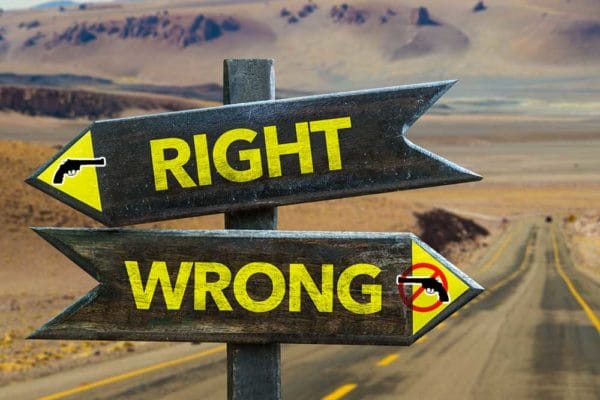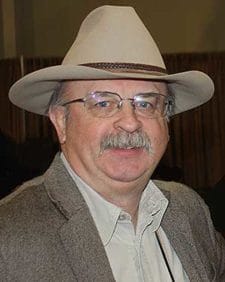
U.S.A. — Washington, D.C.—a jurisdiction with some of the strictest gun control laws in the country—leads the nation with “the highest rate of mass shootings per capita,” according to a report in the Daily Mail, citing new research released this week by medical researchers in Colorado.
Here’s how the Daily Mail headlined its story: “America’s mass shooting hotspots revealed: First of its kind study breaks down thousands of massacres by state – and there’s NO correlation between gun control laws.”
The study is published in JAMA Network Open, and it relies on data from the Gun Violence Archive, a database often criticized by the firearms community. The work was done by researchers at the University of Colorado: Leslie M. Barnard, MPH, Department of Epidemiology, Colorado School of Public Health; Erin Wright-Kelly, DrPH, MA, Injury and Violence Prevention Center, Colorado School of Public Health, and Marian E. Betz, MD, MPH, Department of Emergency Medicine, University of Colorado School of Medicine, University of Colorado Anschutz Medical Campus, Aurora.
The report may cool some jets in the gun control community, which has maintained that states with the most guns and “lax” laws have the highest number of shootings. But here’s what the report says:
“The rate of mass shootings per 1,000,000 people was highest in the District of Columbia (10.4 shootings), followed by much lower rates in Louisiana (4.2 mass shootings) and Illinois (3.6 mass shootings), the states with the next 2 highest rates (Table).”
Translation: Gun laws do not appear to have an impact, since the District of Columbia and the state of Illinois have restrictive laws, while Louisiana is far less restrictive.
As detailed by the Daily Mail, the “Top Ten” jurisdictions for mass shootings are:
- Washington, D.C. (10.43 per million)
- Louisiana (4.28 per million)
- Illinois (3.61 per million)
- Mississippi (2.91 per million)
- Alabama (2.32 per million)
- Missouri (2.29 per million)
- South Carolina (2.26 per million)
- Delaware (2.18 per million)
- Tennessee (2.03 per million)
- Maryland (2.2 per million)
Another interesting revelation in the report explains, “From 2014 to 2022, there were 4011 mass shootings, ranging from zero events in Hawaii and North Dakota to 414 events in Illinois. For these 9 years, one-third (27.3%) were social-related mass shootings, 15.8% were crime related, 11.1% were domestic violence (DV) related, 1.4% were school or work related, and 52.0% were not a part of these categories (Table). There was a median of 45 mass shootings per state for all states and the District of Columbia (mean, 78.6). A total of 21 006 people were killed or injured (Table).”
More data which may be problematic for proponents of stricter gun control laws, shows Illinois had the most mass shootings (414), California came in second with 367 while Texas reportedly had 270 such incidents. Gun law differences between the three states are dramatic.
The state with the highest rate of gun ownership, according to World Population Review, is Montana, where 66.3 percent of adults own a gun, and it had one of the lowest numbers of mass shootings at 4. Neighboring Wyoming, which is second highest for gun ownership at 66.2 percent of adults owning guns had only one (1) mass shooting.
Meanwhile, New York, with 19.9 percent gun ownership, had 186 mass shootings, and neighboring New Jersey, with 14.7 percent gun ownership, had 93 mass shootings, according to a state-by-state chart published with the study.
And to demonstrate further how gun laws do not correlate with mass shootings, Hawaii, with 14.9 percent gun ownership and North Dakota, with 55.1 percent gun ownership, had no (0) mass shootings, the only two states on the chart with zero incidents during the study period.
The Daily Mail report quotes Ph.D. student Barnard, who stated, “We wanted to help explain the ‘why, where and how often’ to give people an understanding of this issue.
“This study is not intended to answer every question, but highlights components to generate more hypotheses,” she added.
Barnard acknowledged that the definition of a “mass shooting” varies, “depending on the source.”
“While we consider mass shootings as four or more persons shot or killed,” Barnard said, “some data sources only count deaths.”
She acknowledged that this discrepancy could make research difficult for epidemiologists.
The report could make things just as difficult for the gun prohibition lobby, which has argued frequently that states with so-called “lax” gun laws are more deadly than states with more restrictive laws. This new research tends to refute that claim.
About Dave Workman
Dave Workman is a senior editor at TheGunMag.com and Liberty Park Press, author of multiple books on the Right to Keep & Bear Arms, and formerly an NRA-certified firearms instructor.
from https://ift.tt/QIEmh6s
via IFTTT

No comments:
Post a Comment